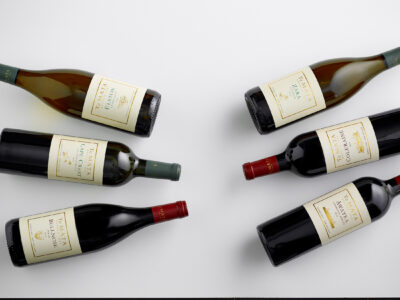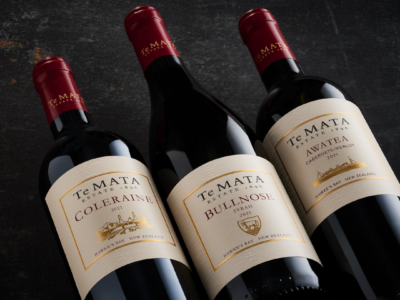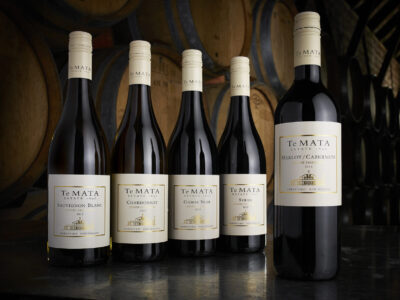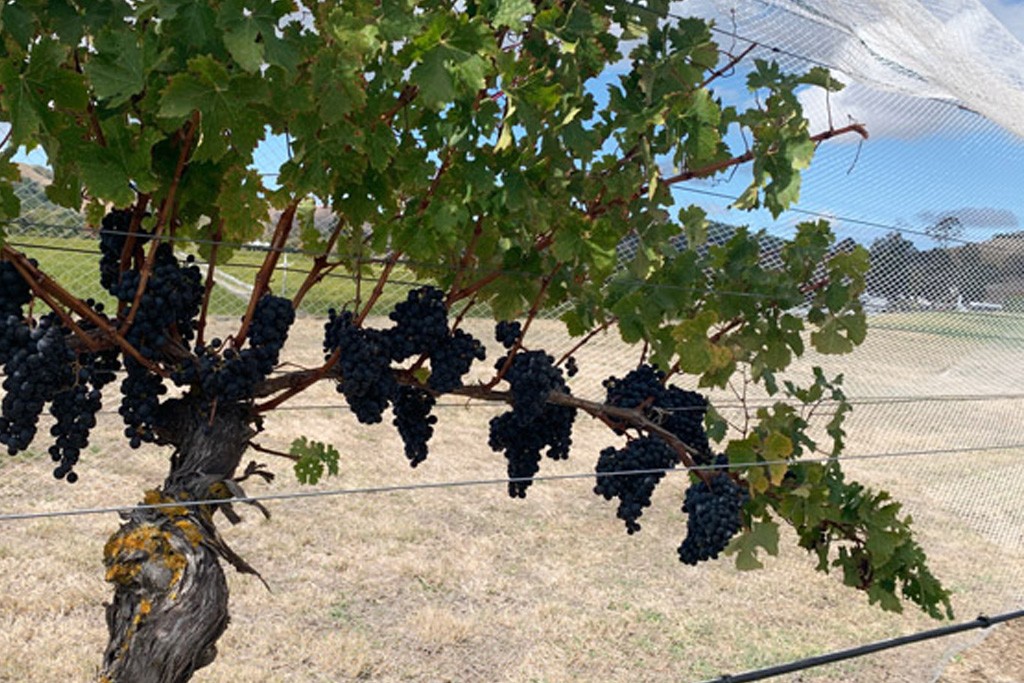Te Mata Estate’s 2020 vintage is a “Perfect Vision” – the greatest wines in Te Mata’s 125-year history. Three factors combined to create this year’s remarkable collection; a dynamic new generation within Te Mata, the blossoming realisation of a decade long technical upgrade that began in our vineyards and has progressed right through our grape growing and winemaking processes, and, of course, the magnificence of the 2020 growing season. Te Mata enjoys a wonderful heritage, with fine wine lover’s knowing well the legendary wines and people of our past. Now, a new Golden Age has arrived – created by a younger team with fresh ideas, working re-invigorated vines from historic sites, and building on the glories of the past to attain new heights from a terrific run of vintages – unparalleled in the estate’s history.
– Nick Buck, CEO
Spring
Average rainfall in Winter 2019 ensured good soil moisture going into the season. September was mild, with only a few days above 20 degrees. There were no frosts and rainfall was average at around 60mm. October was warm with most days reaching 20 to 25 degrees. We did have an isolated hail event at Te Mata’s Isosceles vineyard, causing a reduction to the chardonnay crop. With no frosts and rainfall of 130mm, this ensured good soil moisture early in the season. November was very warm with most days between 25 and 30 degrees and five days around 30 degrees. Warmish nights contributed to an impressive monthly heat summation with 60-degree days above the average. Rainfall at less than half the average began a trend that was to last the whole season.
Summer
December was warm with most days reaching 25 to 30 degrees. Flowering was early (about 10 days) and went well with very favourable temperatures in November and December. Chardonnay (the first to flower) set with noticeable ‘hen and chicken’ in both the Mendoza and clone 548, possibly due to some cool nights. Rainfall at 40mm was two thirds of the average. Overall, canopies had reached a good size and crop levels appeared normal, although bunch numbers appeared to be down a bit compared to previous years. Grass in the vineyard was dying off and irrigation was underway in most blocks. This year, the reds (except the Gamay Noir) were 100% leaf plucked and done earlier, before January. Gamay noir had a 70% leaf pluck, more than the previous years. January temperatures were variable with a cooler, southerly patch mid-month, but most days were in the 25 to 30 degree range. The month finished with a very hot week of 30 to 35 degree days bringing the January heat summation to a little above average. Rainfall was well below normal at between 20 and 30mm, depending on vineyard location. It became apparent that syrah and younger merlot vines were carrying a larger crop than expected. This was due not to excess bunches, but there being more berries per bunch than usual. A greater effort was made at this time to fine tune the crop levels in these varieties by dropping bunches and to do it earlier (preveraison) versus a green thin. February began with three memorable days between 35 and 40 degrees and continued with most days around 30 and only five below 25 degrees. Nights were warm at 10 to 15 degrees. Unsurprisingly, heat summation ended up 50 degree days warmer than average for the month. Rainfall was 3mm! Full irrigation programs were in place. All vine canopies had grown well and were healthy with no signs of fungus diseases. Veraison began at least 10 days early and accelerated in the February heat so that it was all but done by the 20th. Cabernet Franc began late and then caught up.
Autumn – Harvest
March temperatures were like a roller coaster, with several cooler southerly patches punctuated by longer periods of warm days between 25 and 30 degrees. Degree days for the month were a little below average and rainfall was 25mm, most of which was after picking had finished. By late February/early March, it was most noticeable that there was no botrytis in the crop and flavours in the grapes had come early and were delicious. 2020 will be remembered as a very early and exceptional vintage. White varieties were harvested by the first week of March in beautiful condition, with moderate to good sugar levels. Picking decisions were made more around flavours and acidity; as we had ripe acidity at lower sugars, freshness was paramount and maintained. Gamay noir was finished by mid-March and has produced a wine of more colour and flavour than we have seen previously. Other red varieties continued to ripen in the dry and warm conditions of late March. The perfectly healthy crop meant our hand harvesting crew could easily pick good tonnages every day, enabling us to bring in the red crop with ideal ripeness and condition in the second half of March. In the barrel, the young red wines of 2020 have deeply saturated colours and intense ripe berry, syrupy flavours. Tannins are monumental but sweet, fine-grained and powdery.
Conclusions
So what was it about 2020 that made the wines so good?
- Plenty of early season soil moisture and warmth established good-sized canopies.
- No canopy disease because of hot, dry conditions.
- Stress was established well before veraison to encourage ripeness and small berries.
- No botrytis due to very dry conditions and very few dews (only late in the season and light ones).
- Berry weights were small and most crop levels were below normal.
- Every month after October received well below average rainfall; this, coupled with well-run deficit irrigation, enabled a sustained five months of ideal water relations in the vines, i.e. five months of continuous ripening in ideal conditions.
- There was a burst of heat in November and February.
- Most months had above or well above (November and February) average heat summation.
- Season’s heat summation to the end of picking was well above the March average and closer to that of many good vintages picked in April. It was the driest on record as from January.
The vintage provided fruit of quality from each of the Te Mata sub regions that were so distinguishable with a bloom on the berry, small berries, massive extract, tension, ripe acidity and tannins.
With the new processing line and cuverie development, we have exciting times ahead to take some great wines to our assemblage tastings. These wines are now coming from older vines and a very experienced team of passionate people who have got to know the vineyards’ personalities.
Te Mata Estate’s reputation for making ‘Wines of Provenance’ will again be strengthened from an exceptional 2020 vintage. This vintage in particular demonstrates Hawke’s Bay’s maritime/temperate climate can make wines having not only a sense of place but with tension, extract, balance and that quintessential digestibility factor.
Download the Technical Report from Te Mata’s Senior Winemaker Phil Brodie here…





